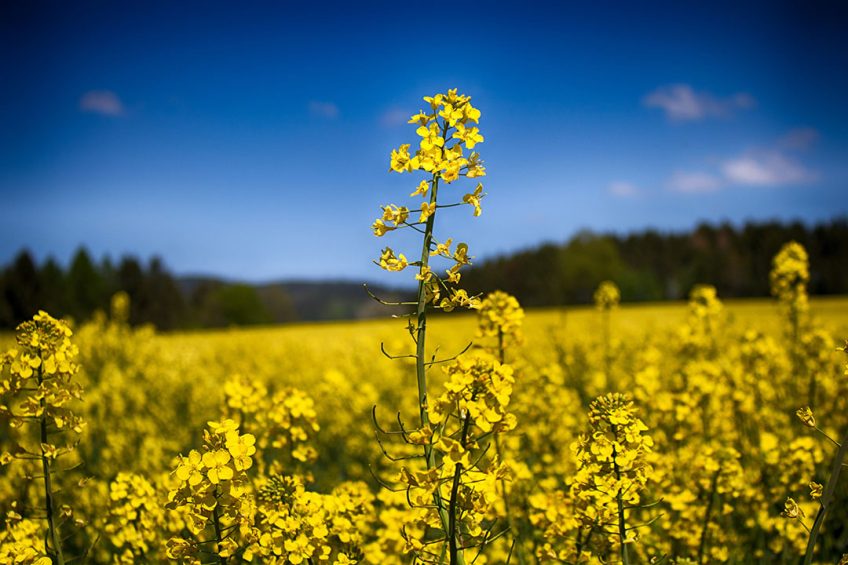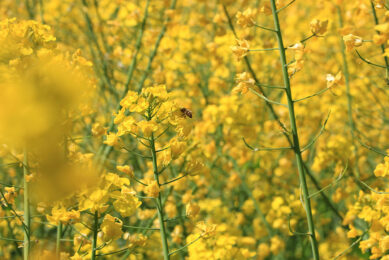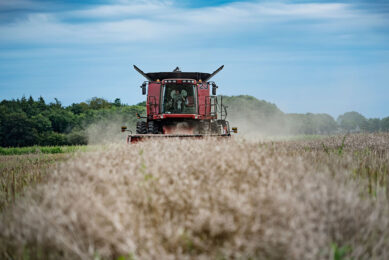Key to growing pod-shatter resistant rapeseed revealed

Huge losses due to pod-shatter when harvesting rapeseed may be eliminated after scientists have revealed the secrets to a resistant variety’s strength.
Pod-shatter is the phenomenon when rapeseed pods break apart during mechanical harvesting, which causes massive yield losses to farmers.
Rapeseed of the future
However, Chinese scientists have studied a highly pod-shatter resistant rapeseed variety called OR88, and identified the reasons behind its mysterious durability. The scientists say the research promises to provide breakthroughs in the development of high-yield, pod-shatter resistant rapeseed in the future.
The costs incurred by pod-shatter
Rapeseed grows in pods and are used as a staple source of nutritious oils across the world. As the pods age they naturally break apart, or pod-shatter, which can incur losses as high as 50%. Pod-shatter also causes problems during the harvest of rapeseed using machinery.
Improving rapeseed crops to produce varieties that can withstand pod-shattering without compromising on oil quality or yield is of key interest to agriculturists the world over.
Limit of available germplasm
Essential to the production of new crop hybrids is a germplasm, a collection of plant genetic material and seeds. This germplasm is often held in public repositories to allow scientists easy access and thus advance the field of plant breeding.
The development of new rapeseed hybrids has been hindered by limitations to the available germplasm.
Our findings constitute a breakthrough germplasm resource that could make the high-yield direct harvest of rapeseed at full maturation realistic and cost-effective.
OR88 rapeseed variety
While there are some natural varieties with high pod-shatter resistance, such as one called OR88, thus far there has been little information on the underlying genetic contributions to the trait.
However, in a recent study published in The Crop Journal, a group of Chinese scientists have identified the candidate gene that lends OR88 its high pod-shatter resistance.
Lead author of the study, Dr Qiong Hu of the Chinese Academy of Agricultural Sciences, said: “Our findings constitute a breakthrough germplasm resource that could make the high-yield direct harvest of rapeseed at full maturation realistic and cost-effective.”
Why pods shatter
When rapeseeds reach maturation, part of their pod turns into lignified or hard and woody tissue. The resulting tension between this lignified tissue and the more flexible portions of the pod cause the pod to dehisce or burst open.
What gives OR88 pod-shatter resistance?
Dr Hu and the research team examined the pods of several rapeseed varieties, including OR88, and discovered that OR88’s pod-shatter resistance comes from a layer of lignified cells that bridge the gap between layers of lignified tissue in the pods. They named this structure the ‘lignified layer bridge’ and set about identifying the gene responsible for this lignified-layer bridge (LLB).
It is our hope that our discovery will help make this heart-healthy oil inexpensive and widely available. Let all my loved ones eat nutritious and cost-effect oil!
Sequencing OR88 DNA
They first sequenced the DNA of OR88, and traced the LLB gene to a chromosome called chromosome 9 (C09). To further narrow down the location of the gene, they then constructed DNA fragments called ‘Kompetitive Allele Specific PCR’ (KASP) markers. They finally performed an RNA analysis on the 43 genes they obtained from KASP and succeeded in isolating the single gene, BnTCP8.C09, responsible for the LLB. This is perhaps the first gene for natural pod-shatter resistance in the rapeseed germplasm.
Dr Hu added: “It is our hope that our discovery will help make this heart-healthy oil inexpensive and widely available. Let all my loved ones eat nutritious and cost-effect oil!”











